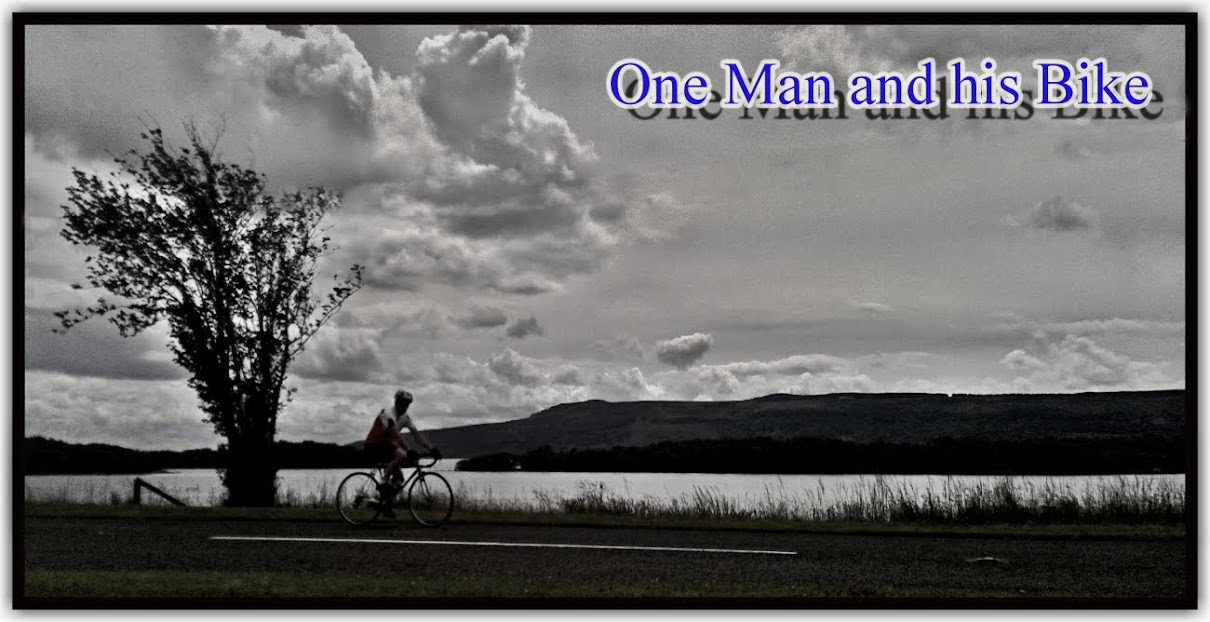It's often been said that the arrival of spring sees the roads and pavements etc littered with more than the usual amount of cyclists, runners and walkers, or 'Butterflies' as they are affectionately known.
Whilst I agree there are many people who only come out to play when the weather is fine (hence the butterfly tag) I do however tend to take a more pragmatic approach to this annual phenomenon.
There are folk for whom a particular health problem for example might not be conducive to exercising in the colder, darker, days of autumn/winter, or folks who don't have the time to get out and put in the miles, particularly in the darker evenings and after a day's graft.
So next time some of you hardy peeps pass or meet a 'butterfly', remember there might just be a reason you don't pass or meet them when the days aren't as pleasant........
Wednesday 26 March 2014
Wednesday 12 March 2014
'To Belfast's Salty Waters'..................
From a fast moving stream at it's source in the Dromara Hills near my home at Slieve Croob, the River Lagan 'river of the low-lying district" is a major river here in Northern Ireland.
From Dromara it continues on a lonely and at times busy 40 miles journey to Belfast through Dromore, Donaghcloney and Lisburn before entering Belfast Lough.
Looking towards East Bridge Street and the Titanic Quarter, this shot of my trusty steed was taken near the former Gasworks site in Belfast.
Visible in the background are the famous Harland & Wolff twin shipbuilding gantry cranes (Samson and Goliath) which are situated at Queen's Island in the city.
From Dromara it continues on a lonely and at times busy 40 miles journey to Belfast through Dromore, Donaghcloney and Lisburn before entering Belfast Lough.
Looking towards East Bridge Street and the Titanic Quarter, this shot of my trusty steed was taken near the former Gasworks site in Belfast.
Visible in the background are the famous Harland & Wolff twin shipbuilding gantry cranes (Samson and Goliath) which are situated at Queen's Island in the city.
Wednesday 5 March 2014
Saturday 1 March 2014
The Norman Trail (Part 1)
The arrival of the Normans in Ulster brought with it dramatic changes in the landscape of Ulster, particularly in Counties Antrim and Down.
Fortifications were soon constructed within the conquered land, along with abbeys and churches to meet the spiritual needs of the people.
County Down is particularly rich in such sites and this one, an Anglo-Norman Motte and Bailey just south of Lisburn between Legacurry and Ravernet, is a fine example.
A lot of these impressive structures were strategically placed near water and the Ravernet one is no exception sitting as it does near the local river.
This particular fortress, originally an oval earthwork dating back to the 10th-12th centuries AD was re- modelled by the Normans in the late 12th or 13th century AD with the addition of a motte and modifications to the timber palisade defences.
1961 excavations revealed parts of wooden and stone buildings in the bailey enclosure and slighter structures outside to the east.
Also found were a collared urn with a cremation burial.
Fortifications were soon constructed within the conquered land, along with abbeys and churches to meet the spiritual needs of the people.
County Down is particularly rich in such sites and this one, an Anglo-Norman Motte and Bailey just south of Lisburn between Legacurry and Ravernet, is a fine example.
A lot of these impressive structures were strategically placed near water and the Ravernet one is no exception sitting as it does near the local river.
This particular fortress, originally an oval earthwork dating back to the 10th-12th centuries AD was re- modelled by the Normans in the late 12th or 13th century AD with the addition of a motte and modifications to the timber palisade defences.
1961 excavations revealed parts of wooden and stone buildings in the bailey enclosure and slighter structures outside to the east.
Also found were a collared urn with a cremation burial.
Subscribe to:
Posts (Atom)



